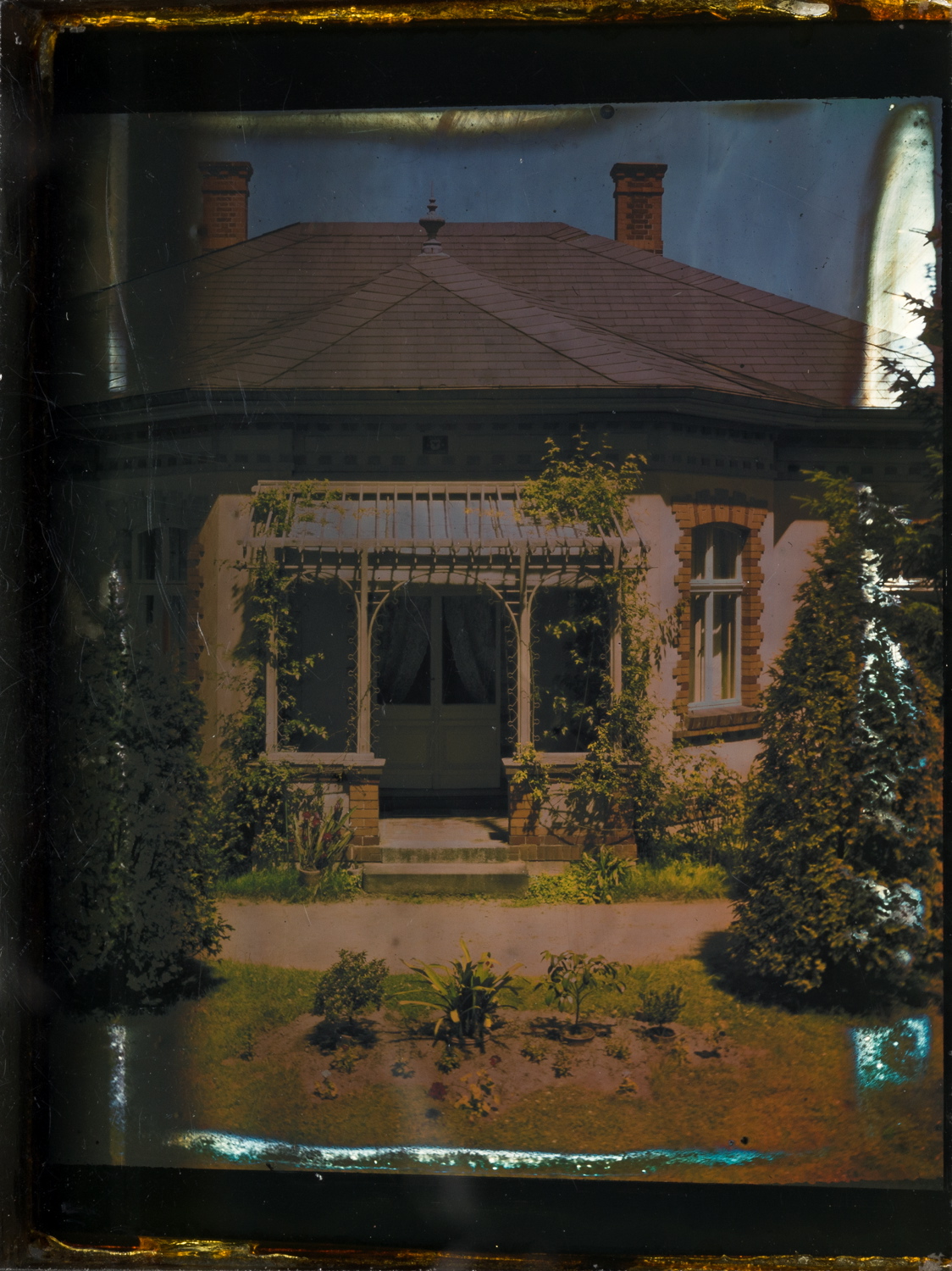Week 27 - 2015

Dr. Richard Neuhauss, Garten in Gosslichterfelde. Boothstr. 17, 1901. Preus museum's collection.
Nobel Prize-winning color photography
Even though we consider 1839 photography's birthday, it would take almost a hundred years before a satisfactory color-photography process arrived, and it wasn't in everyday use until the 1950s and 60s. Many processes were developed, tried, used, and then set aside. This picture is an example of one of the processes, the only one that actually reproduces perfectly the colors we have around us. The image is called a Lippmann plate and is named for the inventor.
In 1891 the French physicist Gabriel J. Lippmann presented a method of color photography that worked with interference patterns among various wave lengths of light. The method was so scientifically extraordinary that he received the 1908 Nobel Prize in physics.
The technology gives perhaps the most accurate color image that is possible photographically. But as with so many excellent things the process has disadvantages. For example it does not allow for copying or reproduction, it requires additional equipment (like a prism) to look at the image, and long exposure times make it difficult to photograph living objects. And finally—for a reflective medium it uses poisonous quicksilver, which does not create optimum working conditions for the photographer.
The picture seen on the page here is, of course, a photographic copy of the original plate. The proper experience of the colors can only be obtained by viewing the actual plate reflected in a mirror or via a prism.




